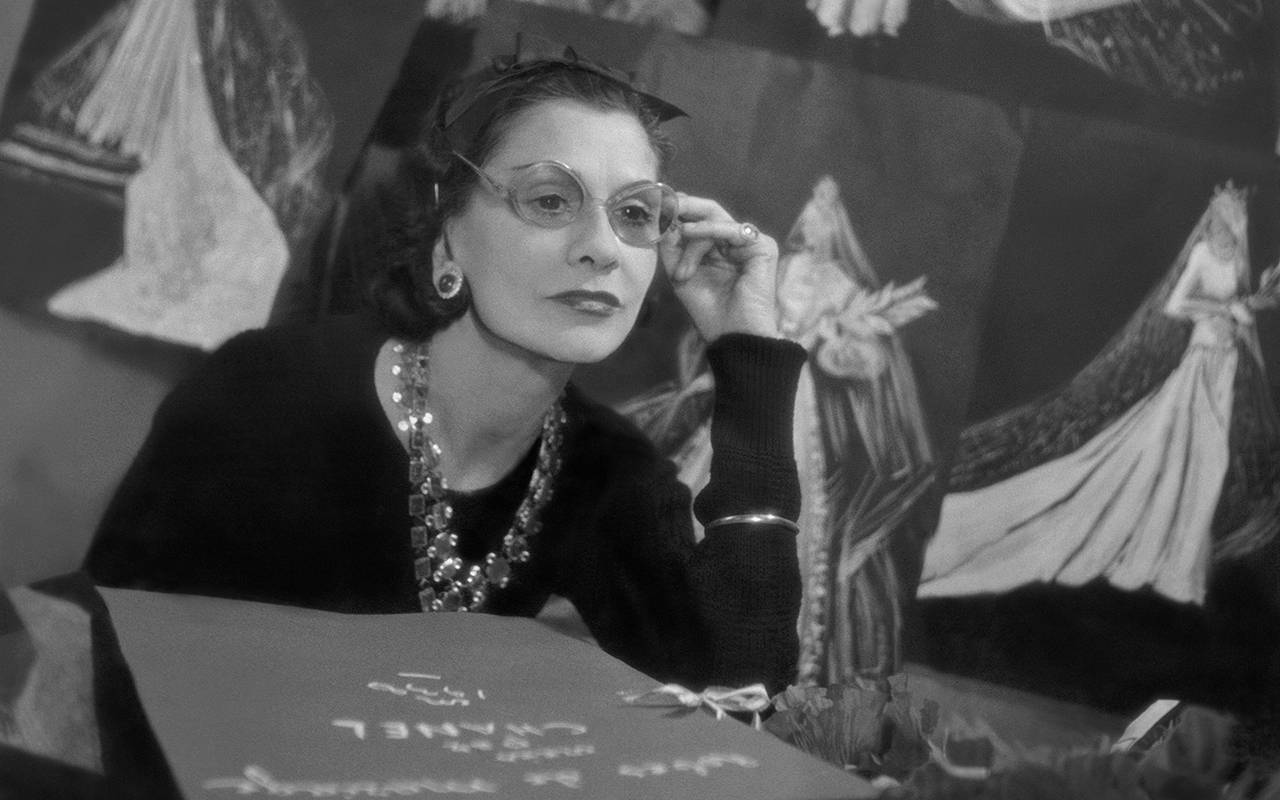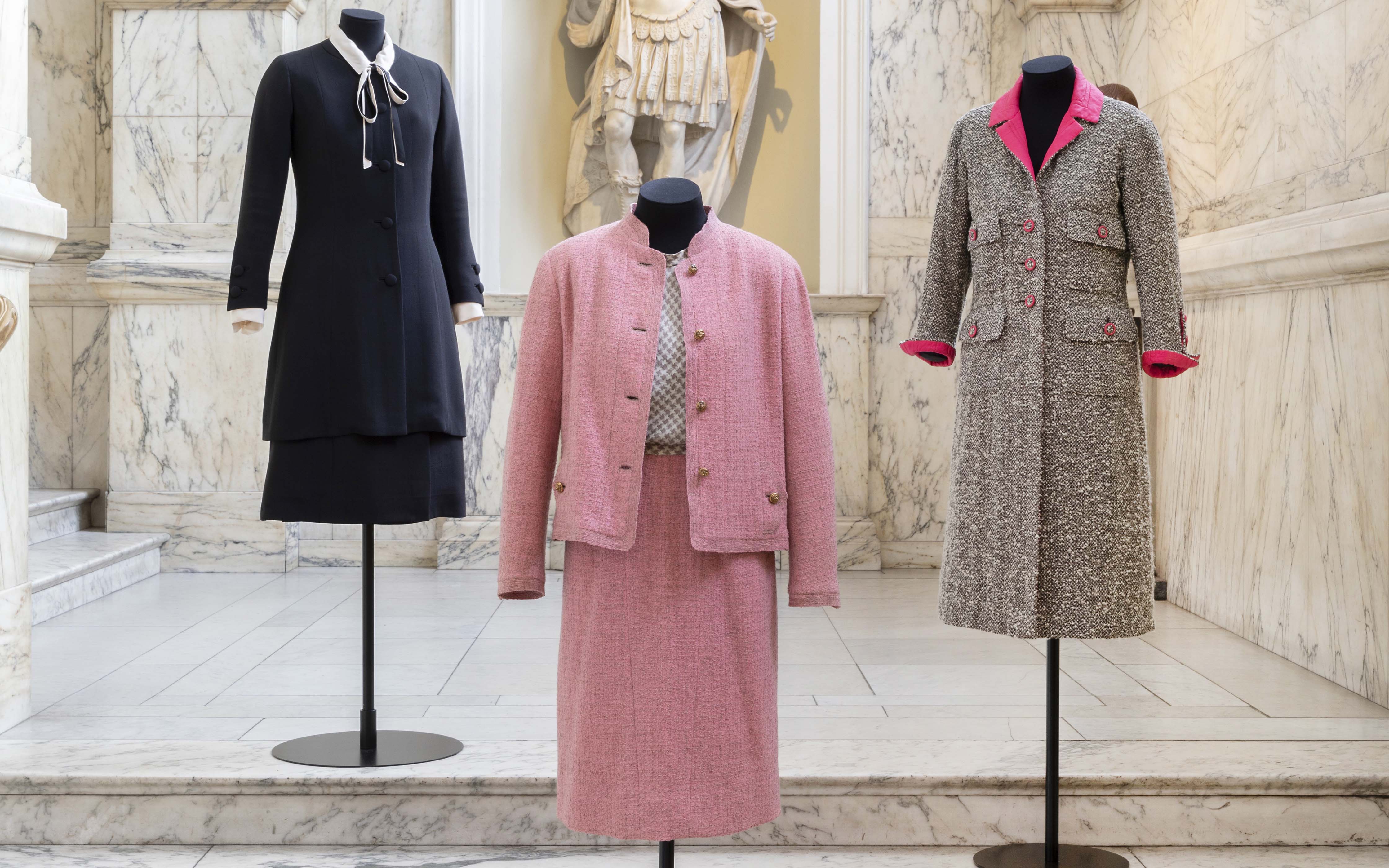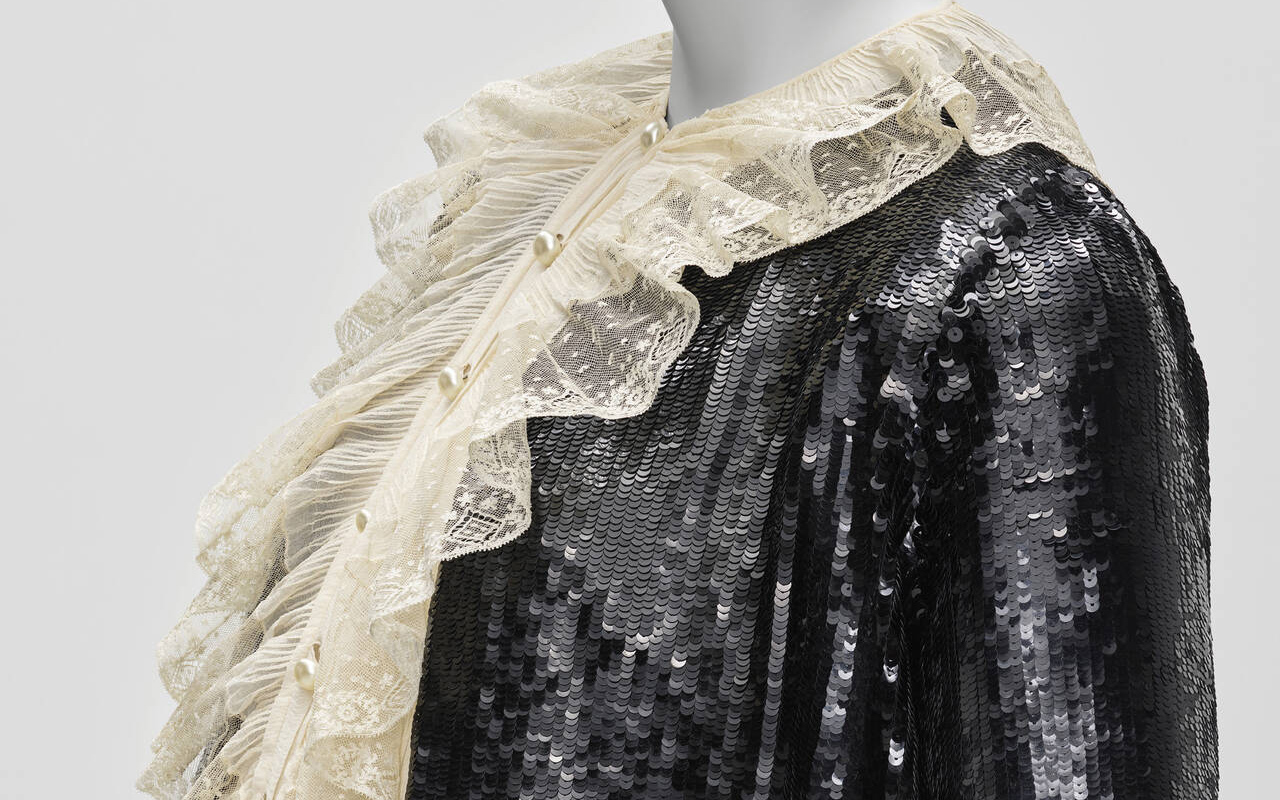 Gabrielle Chanel, 31 rue Cambon, 1937, Paris. Photo: Roger Schall/Condé Nast/Shutterstock
Gabrielle Chanel, 31 rue Cambon, 1937, Paris. Photo: Roger Schall/Condé Nast/Shutterstock
The UK has long awaited such an ambitious exhibition focusing on the style and work of one of the great icons of contemporary fashion. After the success of the first weeks since its premiere and a triumphant opening, the V&A resumes its usual activity so that culture lovers can contemplate with greater peace of mind the life path and savoir-faire of Gabrielle ‘Coco’ Chanel.
Gabrielle Chanel. Fashion Manifesto is the first exhibition dedicated to the work of the celebrated French couturier and traces the evolution of her iconic design style and the creation of the House of CHANEL, from the opening of her first hat store in Paris in 1910 to the presentation from his last collection in 1971.
The exhibition stands out for its grandeur in every aspect, with rarely seen pieces that have been recovered from the Palais Galliera and the heritage collections that form part of the Chanel Heritage. It presents in the same space almost 200 looks that are exhibited together for the first time, as well as accessories, perfumes and jewelry, which explore Gabrielle Chanel’s talent in fashion design. She was a visionary who paved the way to a new elegance and continues to influence the way women dress today. Among the treasures exhibited, one of the oldest Chanel garments preserved, dating from 1916, stands out; original costumes designed for the production of Ballets Russes from Le Train Bleu in 1924; outfits created for Hollywood stars Lauren Bacall and Marlene Dietrich; an early example of Chanel’s revolutionary evening pants and ensembles from Chanel’s final collection in 1971.
An unprecedented formula: comfortable elegance
Chanel designed above all for herself. By creating clothing suitable for an independent and active lifestyle, she anticipated the needs and desires of women. “Gabrielle Chanel dedicated her life to creating, perfecting and promoting a new type of elegance based on freedom of movement, a natural and casual pose, a subtle elegance that rejects all extravagance, a timeless style for a new type of woman,” said Miren Arzalluz , director of the Palais Galliera at the opening of the exhibition in London. This is precisely the Coco Chanel Manifesto, a legacy that remains alive today: “Her success was based not only on the functionality, comfort and chic elegance of her designs, but also on her ability to understand and interpret the needs and desires of the women of her time,” added Arzalluz.
Through ten thematic sections, the exhibition explores Chanel’s innovative approach to fabric, silhouette and construction, and examines how she established a new framework for fashion in the 20th century. Showcasing an impressive array of some of Chanel’s most notable designs during her sixty years in fashion, the exhibition examines her professional career, the emergence and development of her style and her contribution to fashion history. The exhibition also places special emphasis on Chanel’s British inspirations, such as her adoption of tweed, collaborations with British textile companies and a textile factory in Huddersfield.
 Gabrielle Chanel. Fashion Manifesto at the Victoria and Albert Museum
Gabrielle Chanel. Fashion Manifesto at the Victoria and Albert Museum
We review some key sections present in the exhibition:
Towards a New Elegance offers an introduction to the beginning of Gabrielle Chanel’s career as a couturier, opening her first boutique on the rue Cambon in Paris in 1910, and later, in the coastal resorts of Deauville and Biarritz. This introductory section describes how the success of this business allowed it to expand into tailoring and showcases one of the oldest surviving Chanel garments, characterized by minimalism and precision. A simplified way of dressing that contrasted with the excessively decorative fashions of the time and that would lay the foundations for its design principles.
The Emergence of a Style focuses on how Chanel developed a distinctive and immediately recognizable style in the 1920s and 1930s. With clean lines, fluid materials and a simple colour palette, her understated designs were radical in their practicality and displayed an elegance refined. This block also examines the role of textiles and manufacturing, the use of embroidery in their designs and highlights the famous black Chanel dress.
The Invisible Accessory presents the creation and impact of the debut of Gabrielle Chanel’s No. 5 perfume, which became the best-selling fragrance in the world. Designed as an extension of her clothing and reflecting her vision of modernity, Chanel made the N°5 the signature of her fashion house. This section also explores the launch of the Chanel makeup line in 1924 and skin care products in 1927.
Luxury and Line focuses on how Chanel eveningwear demonstrated a refined blend of inventiveness and classicism that subtly accentuated the female form. The designer harmonized proportions and materials with the aim of creating garments that expressed elegance, freedom and simplicity. The resulting designs conveyed the tension between the garment and the body, described in French as the ‘ allure ‘. This block will also examine ‘ Bijoux de Diamants ‘, his first and only fine jewelry collection from 1932 commissioned by International Diamond Corporation of London.
Closing the House describes the impact of the outbreak of war in 1939 on her personal and professional life. The exhibition continues with Chanel’s Official Return to Fashion on 5th February, 1954, with the reopening of her haute couture house at the age of seventy-one. Chanel’s comeback collection featured the distinctive features she had introduced so successfully during the 1920s and 1930s, representing her updated vision of the modern woman’s wardrobe.
The Suit focuses on Gabrielle Chanel’s defining garment of post-war fashion, with over fifty outfits in a variety of colours displayed on two levels. A statement of her vision of modern femininity, the Chanel suit combined comfort and elegance with simplicity and style. Described by Vogue in 1964 as “the most beautiful uniform in the world”, the Chanel suit, which has since become a timeless classic, remains a fundamental reference in fashion today.
Chanel Codes shows how accessories were fundamental to Chanel’s conception of a harmonious silhouette. The accessories reflected her pragmatic vision of fashion and provided recognizable codes that underlined the unity of her style. Since the 1950s, the Chanel 2.55 bag and two-tone slingback shoes have become two of the most enduring accessories in the fashion world.
Into the Evening presents festive fashion as an important part of Chanel’s haute couture collections in the last stage of her career. From the late 1950s she adapted her suits to include a range that could be worn at night. These cocktail dresses followed the same shape as her day suits, made in a variety of richly decorative fabrics such as gold and silver lamĂ©s , textured fabrics, and intricately printed silks. This section takes inspiration from the gold colour palette and black Coromandel lacquer lampshades of Chanel’s own apartment.
Costume Jewellery explores the essential part of Gabrielle Chanel’s distinctive style. Rejecting the conventions of fine jewelry, Chanel gave costume jewelry a new status. From the early 1920s, Chanel boutiques offered a dazzling range of costume jewelry to match its elegant fashion pieces. The designer’s costume jewelry took inspiration from various places and historical periods.
A Timeless Allure represents the end of the exhibition and celebrates the evening dress as an exercise in Chanel style, with looks displayed in a recreation of the iconic mirrored staircase based on the designer’s atelier. Chanel proposed a relaxed version of the formal dress that was discreet and refined, revisiting the foundations that had guided her aesthetic and marked her career. This block shows that, until her last Spring -Summer 1971 collection , Gabrielle Chanel constantly reinterpreted, updated and perfected her rules and principles, continually refining her legendary style.
The Gabrielle Chanel exhibition. Fashion Manifesto will be open to the public until the 25th February.

Gabrielle Chanel, Trouser suit 1937-38 © CHANEL / Photo: Nicholas Alan Cope / Courtesy of Victoria and Albert Museum, London / Given by Mrs Diana Vreelan
